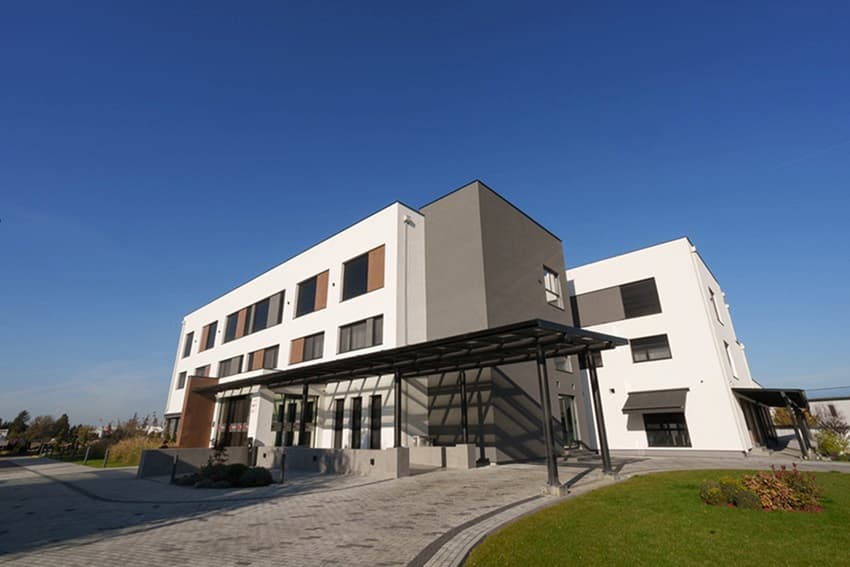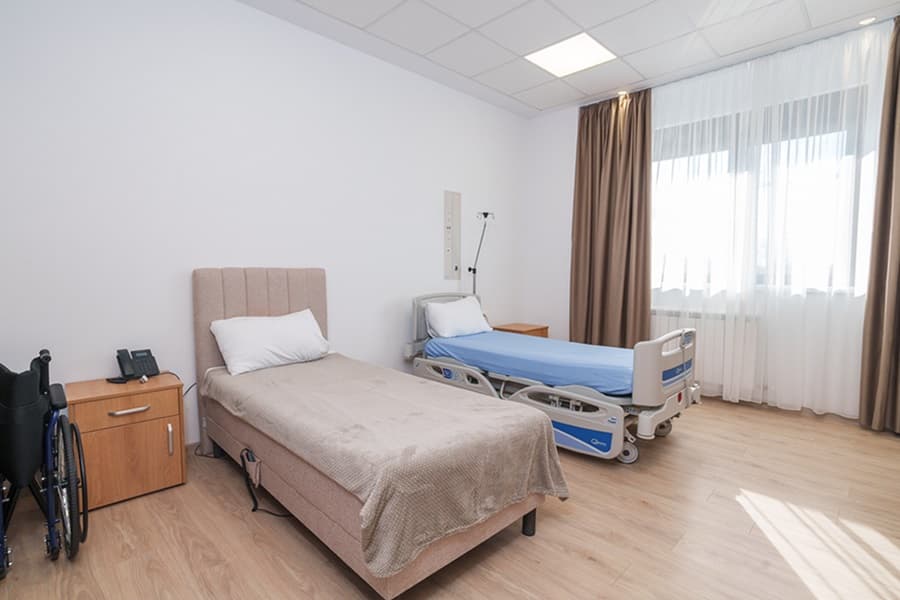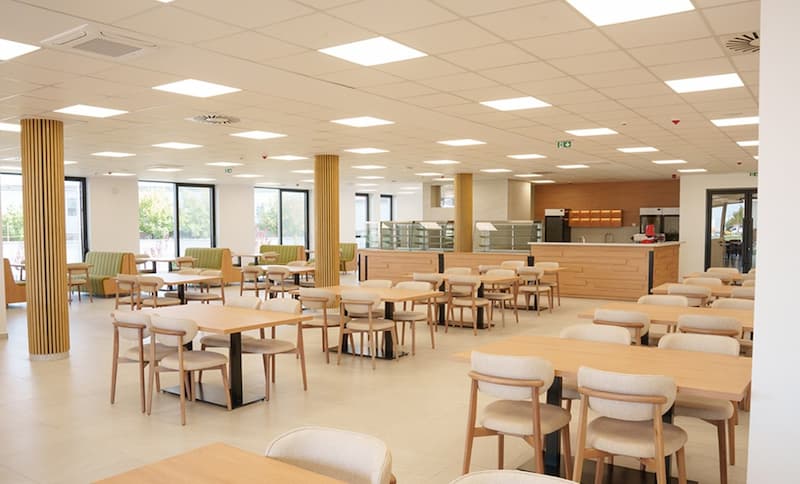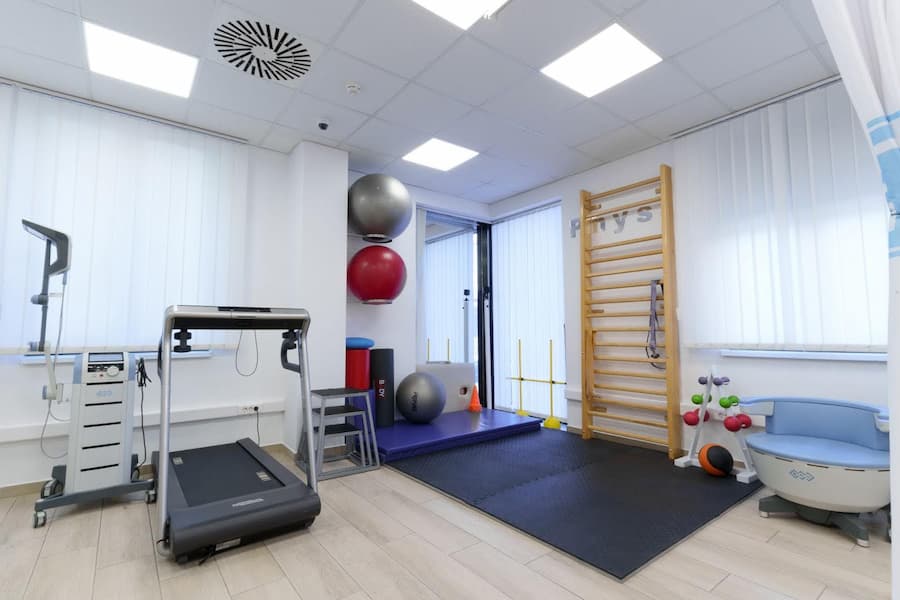Stem cells for the treatment of spinal cord injury are one of the most exciting research and clinical areas, offering new ways of recovery and improvement in the quality of life. In cases of damage to the spinal cord, among other sports injuries, stem cell treatment introduces a new dimension in prospects for chronic mobility and pain relief.
In this article you will find out whether stem cells cure spinal cord injuries, if there is a stem cell treatment for paralysis, and what is the cost of stem cell treatment for spinal cord injury.
If you’re looking for an answer to the question, “Where can I get stem cell treatment for spinal cord injury?” feel free to scroll down to the relevant section.
Understanding Spinal Cord Injuries and the Impact of Stem Cell Therapy
Spinal cord injuries significantly impact individuals’ lives, particularly in terms of mobility, sensation, and independence. New advances in the field of stem cells for the treatment of spinal cord injury might bring the possibility of restoration of functions and give options for a different future.
What are stem сells?
Basically, stem cells are the master cells of the body, capable of transforming into various other cell types. These kinds of cells play a crucial role in the growth, repair, and renewal of our bodies throughout life.
Why stem cells hold promise for spinal cord injuries
One may think that stem cells cure spinal cord injuries or that stem cells are a cure for paralysis; it is a new method instead, opening newer visions for recovery and improvement in quality of life following spinal cord injuries.
Stem cell repair involves regenerating nerve cells, reducing inflammation, and promoting healing.
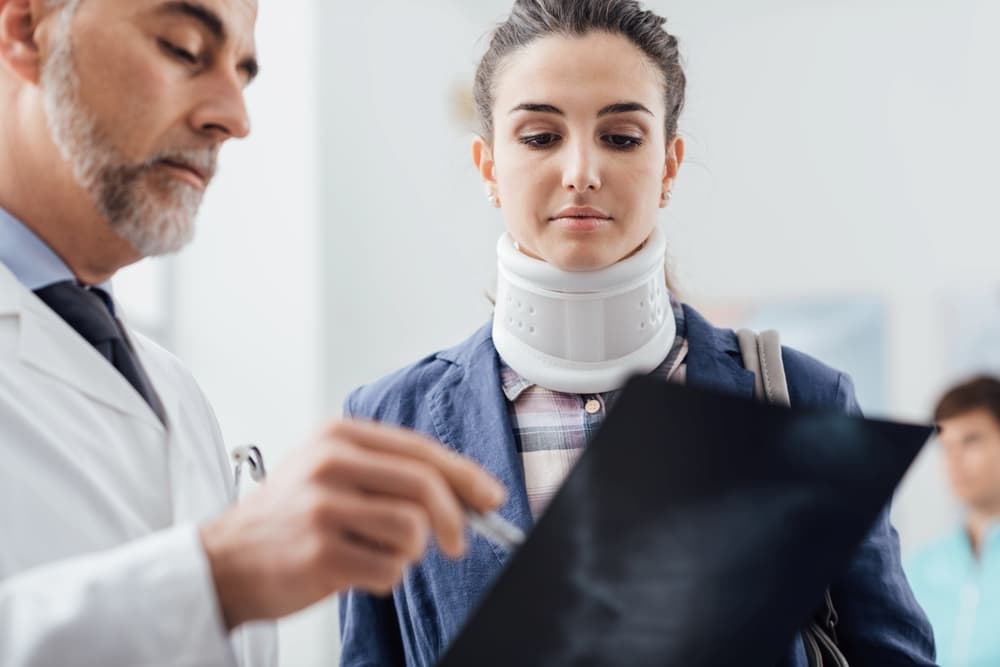
Mechanisms of Stem Cell Therapy in Spinal Repair
Stem cell therapy for spinal repair is a rather complex process intended to restore functionality and facilitate healing of the injured spinal tissues. The mechanism works in the following manner:
- Stem cells secrete several release growth factors and cytokines that improve the surrounding environment and help local cells survive, grow, and heal the injured area.
- Application of stem cells for spinal injury could modulate immune responses by reducing inflammation at the site of injury, hence creating a better environment for recovery and tissue regeneration.
- As neural stem cells resemble neuronal cells, they may cause a pronounced effect in cases of neuronal damage, including spinal cord injuries
Get a free online consultation
Contact us to learn about the expected results of the treatment, its cost and duration.

Medical Advisor, Swiss Medica doctor
Types of Stem Cells Used in Spinal Cord Therapy
Stem cell therapy for spinal cord injury involves numerous types of stem cells, each with different properties and modes of action.
Mesenchymal stem cells (MSCs) for recovery from spinal injury
Multipotent mesenchymal stem cells can be isolated from either bone marrow and fat tissue, in case of patient’s own cells, or umbilical cord and placenta, in case of donor cells. Mesenchymal stem cells for spinal cord injuries secrete various bioactive molecules that may facilitate the repair of tissues, dampen inflammation, and improve the survival of neurons that have been damaged. Stem cells for the spinal injury have immunomodulatory properties and, therefore, help to create an environment that is favorable for regeneration.
Neural stem cells and their role in regeneration
Neural stem cells are one type of stem cell that has the potential to further differentiate into neurons, astrocytes, and oligodendrocytes—necessary cell types for nervous system functioning. NSCs can be obtained from various sources, including the brain or spinal cord. Neural stem cells for spinal cord injury may migrate into the site of damage and contribute to the regeneration of neural tissues, forming new neural connections that will be required for functional recovery.
Embryonic vs. adult stem cells: which are more effective?
The argument between the use of embryonic stem cells for spinal cord injuries and the application of adult stem cells in spinal cord therapy has been under immense debate.
Embryonic stem cells can give rise to any cell type in the body, including cancer cells. They also raise serious ethical and safety concerns.
Adult stem cells, such as MSCs and NSCs, are less pluripotent than those but less controversial and safer. This means they can’t differentiate uncontrollably or cause tumor growth.
Learn more about the different types of stem cells used at Swiss Medica and how they can support the recovery process.
Learn moreAdvantages of Stem Cell Therapy for Spinal Cord Injury
A key aspect of the treatment is the repair of damaged spinal regions by promoting their regenerative mechanisms.
Enhancing healing process and reducing inflammation
Application of stem cells to treat spinal cord injury aims to release cytokines and growth factors that help to regulate the inflammatory responses. It also facilitates regeneration at the site of the injury. Reducing inflammation promotes repair and tissue regeneration, leading to shorter recovery periods and more significant results.
Improving long-term mobility
Stem cells for the treatment of spinal cord injury could improve long-term mobility in patients.
By regenerating damaged neural pathways and fostering new connections between nerve cells, stem cell therapy enhances motor skills and restores mobility in patients with spinal cord injuries.
Alleviating pain and enhancing quality of life
Spinal cord injury patients can experience chronic and long-standing pain because of nerve damage. Stem cells for spinal injury help induce repair in injured tissues and modulate pain pathways. This holistic approach not only focuses on physical rehabilitation but also supports psychological recovery by enhancing independence and mobility.
Explore the science behind stem cell therapy in this insightful article.
Read nowMost of the spinal cord injuries sustained during sports and games leave an athlete with disabling physical limitations and a diminished quality of life. While exploring all possible treatment options, some may believe that stem cells cure spinal cord injuries, but this is not accurate. In practice, using stem cells to treat spinal cord injuries promotes recovery, restores function, and improves the overall well-being of the affected athlete.
Stem Cell Innovations for Athletes with Spinal Cord Injury
Recent breakthroughs in stem cell therapies have opened new frontiers in the world of healing and functional recovery, offering transformative solutions for various conditions. Among this research is the potential for development of a transplant for paralysis—a condition that has long challenged medical science. Here are other major innovations in stem cell therapy:
- Recent research at the Mayo Clinic, for example, proves that stem cell injections for spinal cord injuries are safe and effective in improving sensation and motion in athletes recovering from such injuries.
- Innovative approaches, such as the use of stem cell-derived macrophages and exosomes have shown protective effects on neurons and promote overall neural health.
- Novel methods, such as transplantation of neural stem cells, support long-term recovery, enabling athletes to regain mobility and return to their respective sports. This, in turn, paves the way for further research into the potential of stem cells for paralysis.
- The development of minimally invasive techniques for delivering stem cells directly to the injury site significantly enhances therapeutic outcomes while minimizing risks associated with open surgery.
In addition to stem cell injections for spinal cord injuries, a comprehensive rehabilitation program is also important to promote recovery. It may include:
- Physical therapy,
- Occupational therapy,
- Super Inductive System (SIS),
- Spark/Shock Wave Therapy,
- Electromyostimulation,
- Kinesiotherapy,
- Special training regimens custom-designed on the basis of particular needs.
Swiss Medica also uses this holistic approach to enhance stem cell therapy for spinal cord injuries and help athletes successfully return to their sport.
Get a free online consultation
To learn more about your treatment options, contact us today for a free consultation.

Medical Advisor, Swiss Medica doctor
Choosing the Right Clinic for Treatment of Spinal Cord Injury
When searching for ”Where can I get stem cell treatment for spinal cord injury” it is important to consider the reputation of the facility. Select a clinic that has vast experience in treating spinal injuries and regenerative medicine.
Swiss Medica has specialized in advanced stem cell treatments since 2011.
- Our modern five-building hospital in Belgrade is designed for exceptional care and is only 15 minutes from the airport, making it ideal for international patients.
- Our treatment package includes a personal evaluation, comprehensive stem cell therapy for spinal injury, accommodation, and exosomes therapy after the treatment—all at one inclusive price.
- We can give personalized and detailed attention to our patients at all times, with a dedicated doctor-to-patient ratio of 3-4.
- From the moment our patient arrives, we take care of everything to make the journey seamless. We offer airport pickup at the airport and a comfortable environment designed to offer relaxation and recovery. Our personalized menus are provided based on individual preferences and diet.
- After your treatment, our medical team remains in close contact to monitor your recovery closely for optimum results and long-term improvements in spinal function.
Swiss Medica offers a supportive and nurturing environment designed specifically for patients with spinal cord injuries, ensuring they feel safe and cared for throughout their recovery journey.
Are you considering Swiss Medica for your treatment? Learn more about us.
More about Swiss MedicaSuccess Stories
Generally, patients report increased independence, an alleviation of pain, and overall improvement in their quality of life following injection of stem cells for spinal cord injury.
The story of Mishel from Albania
Mishel experienced a life-changing motorcycle accident in September 2004, which resulted in a severe spinal injury affecting his L1 vertebra. The vertebra remains fractured and has shifted from its normal position within the spine.
After six months of dedicated physiotherapy, Mishel regained the ability to walk using crutches. Unfortunately, due to a wound on his lower back, he had to halt therapy and has since relied on a wheelchair for mobility, a period spanning almost 14 years.
Two months after stem cell therapy for spinal injury at Swiss Medica, Mishel has shown positive progress. He reported feeling sensation in his legs just 2–3 days after therapy began. Motivated by this improvement, he resumed physiotherapy, swimming, and a vitamin therapy course recommended by our doctors. New sensations have developed in his thighs and back, and he can push his legs with greater strength. There is now sensitivity throughout his legs. After exercising, he experiences muscle fatigue and soreness.
He can briefly stand on his own with support, describing a sensation like an electric impulse running through his thighs and lower body. Standing for a short time also helps reduce his back pain.
Costs and Accessibility of Stem Cell Therapy for Spinal Cord Injuries
The cost of stem cells for the treatment of spinal cord injury may vary depending on the specific program, the complexity of the procedure, and the location of the facility.
Internationally, patients can expect to pay between $10,000 and $100,000 for these treatments. The cost of stem cell treatment for spinal cord injury at Swiss Medica is generally more accessible, with prices typically ranging from €7,000 to €31,000*, including accommodation costs.
*The prices mentioned are indicative and subject to change based on individual factors, including the condition’s severity and the number of stem cells needed. Prices are valid as of January 2025.
Access to stem cell therapy for spinal injury can be limited by various factors:
- Geographic location can be a limitation for individuals with spinal injuries.
- While some regions have strict regulations on the use of innovative stem cell treatments, others, like Swiss Medica in Serbia, provide broader use and affordable costs.
- Often, patients and clinicians are less aware of the availability and potential benefit of stem cells for the treatment of spinal cord injury.
Comparison of Stem Cell Therapy to Traditional Treatments
Whereas surgery and medication have long been the standard, stem cells for the treatment of spinal cord injury offer a promising option focused on enhanced recovery and regeneration.
Stem cells versus surgery: pros and cons
| Pros | Cons | |
| Stem cell therapy | – Long-term effects; – Minimally invasive; – Quicker recovery times; – Low risk of complications; – Potential for future broader applications, such as stem cells for paralysis. | – High price of the treatment; – Lower accessibility compared to surgery. |
| Surgery | Structural corrections, like decompression of the spinal cord or stabilization of vertebrae are crucially important in acute injury cases. | – Risks of infection, bleeding, and adverse reactions to anesthesia; – Longer recovery periods. |
Risks of stem cell treatment
While stem cell therapy offers promising benefits, there may be minor side effects. For spinal cord injury treatment, patients may experience mild soreness or discomfort at the injection or extraction site. Some may also report short-term gastrointestinal symptoms, such as nausea, after the procedure.
Send a request
Consulting with specialists in regenerative medicine is important to help you fully understand the risks and make informed decisions about using stem cells for the treatment of spinal cord injury. Arrange a consultation with our regenerative medicine experts for a personalized, no-obligation assessment.

Medical Advisor, Swiss Medica doctor
Current Research and Future of Stem Cell Therapy for Spinal Cord Injuries
Current research on using stem cells for the treatment of spinal cord injuries is ongoing, fast-paced, and focuses on:
- The optimization of cell types and modes of delivery for spinal cord injuries.
- The development of standardized protocols for maximum efficacy with reduced risk.
- Studying the long-term efficacy and consequences.
- Potential of stem cells for paralysis.
Frequently Asked Questions About Stem Cell Therapy for Spinal Cord Injury
1. How long does it take to observe the results?
Results may vary, but an improvement in mobility, sensation, or pain may be observed in a few weeks or months after the commencement of the treatment. Multiple sessions may be recommended in order to completely derive the benefits of spinal cord regeneration with stem cells.
2. How is the treatment done?
Stem cell treatment for spinal cord injury involves delivering stem cells either through an intravenous injection or a direct injection into the spinal cord, depending on the condition and the doctor’s recommendation. Doctors monitor patients post-procedure for any possible side effects.
3. Are there risks to stem cell therapy?
Stem cell therapy for spinal injury is safe when done by certified professionals. The short-term reactions, such as fever or pain at the site of injection, do not last long.
4. What types of stem cells are used in this treatment?
Due to the regenerative and anti-inflammatory properties, cells for the spinal cord stem cell transplant can be taken from the bone marrow or adipose tissue of the patient, or umbilical cord and placenta of the donor.
5. Do stem cells cure spinal cord injuries?
Stem cells do not cure spinal cord injuries, but have promise in enhancing recovery and restoring motor function and sensory perception in patients suffering from spinal cord injuries. There is also no guarantee that stem cells cure spinal cord injuries, since treatment results may considerably vary in patients.
6. Are stem cells a cure for paralysis?
Currently, there is no stem cell treatment for paralysis. However, in recent years, particularly studies conducted by the Mayo Clinic, report encouraging results after receiving stem cell therapy for paralysis. In general, treating it with stem cells helps to increase muscle strength and sensitivity to touch.
Send a request
To learn more, please complete the form below to schedule a consultation with our specialists and explore your treatment options.

Medical Advisor, Swiss Medica doctor
List of References
Alizadeh A, Dyck SM, Karimi-Abdolrezaee S. Traumatic Spinal Cord Injury: An Overview of Pathophysiology, Models and Acute Injury Mechanisms. Front Neurol. 2019 Mar 22;10:282. doi: 10.3389/fneur.2019.00282. PMID: 30967837; PMCID: PMC6439316
Zeng CW. Stem Cell-based Treatment for Spinal Cord Injury: A Critical Review of Cell Sources, Issues, and New Developments in Regenerative Medicine. Int J Mol Sci. 2023 Sep 20;24(18):14349. doi.org/10.3390/ijms241814349 . PMID: 37762654; PMCID: PMC10532158.
Mickey Abraham, Moshe Shalom, Justin Gold, Margaret Seaton, Alina Maleski Smith, Julian Gendreau, Michael G. Brandel, Joseph Ciacci, Stem Cells in the Treatment of Spinal Cord Injury: A Review of Currently Registered Clinical Trials,
World Neurosurgery, 2024,ISSN 1878-8750, https://doi.org/10.1016/j.wneu.2024.08.074.
Osamu Honmou, Toshihiko Yamashita, Tomonori Morita, Tsutomu Oshigiri, Ryosuke Hirota, Satoshi Iyama, Junji Kato, Yuichi Sasaki, Sumio Ishiai, Yoichi M. Ito, Ai Namioka, Takahiro Namioka, Masahito Nakazaki, Yuko Kataoka-Sasaki, Rie Onodera, Shinichi Oka, Masanori Sasaki, Stephen G. Waxman, Jeffery D. Kocsis,
Intravenous infusion of auto serum-expanded autologous mesenchymal stem cells in spinal cord injury patients: 13 case series,
Clinical Neurology and Neurosurgery, Volume 203, 2021, 106565, ISSN 0303-8467,
Bydon, M., Qu, W., Moinuddin, F.M. et al. Intrathecal delivery of adipose-derived mesenchymal stem cells in traumatic spinal cord injury: Phase I trial. Nat Commun 15, 2201 (2024). https://doi.org/10.1038/s41467-024-46259-y
Montoto-Meijide, R.; Meijide-Faílde, R.; Díaz-Prado, S.M.; Montoto-Marqués, A. Mesenchymal Stem Cell Therapy in Traumatic Spinal Cord Injury: A Systematic Review. Int. J. Mol. Sci. 2023, 24, 11719. https://doi.org/10.3390/ijms241411719
Silvestro, S.; Bramanti, P.; Trubiani, O.; Mazzon, E. Stem Cells Therapy for Spinal Cord Injury: An Overview of Clinical Trials. Int. J. Mol. Sci. 2020, 21, 659. https://doi.org/10.3390/ijms21020659
Mayo Clinic. (2024, May 23). Study finds stem cell therapy is safe and may benefit people with spinal cord injuries. Retrieved from https://www.mayoclinic.org/medical-professionals/neurology-neurosurgery/news/study-finds-stem-cell-therapy-is-safe-and-may-benefit-people-with-spinal-cord-injuries/mac-20567444
MD, Pediatrician, Regenerative Medicine Specialist

